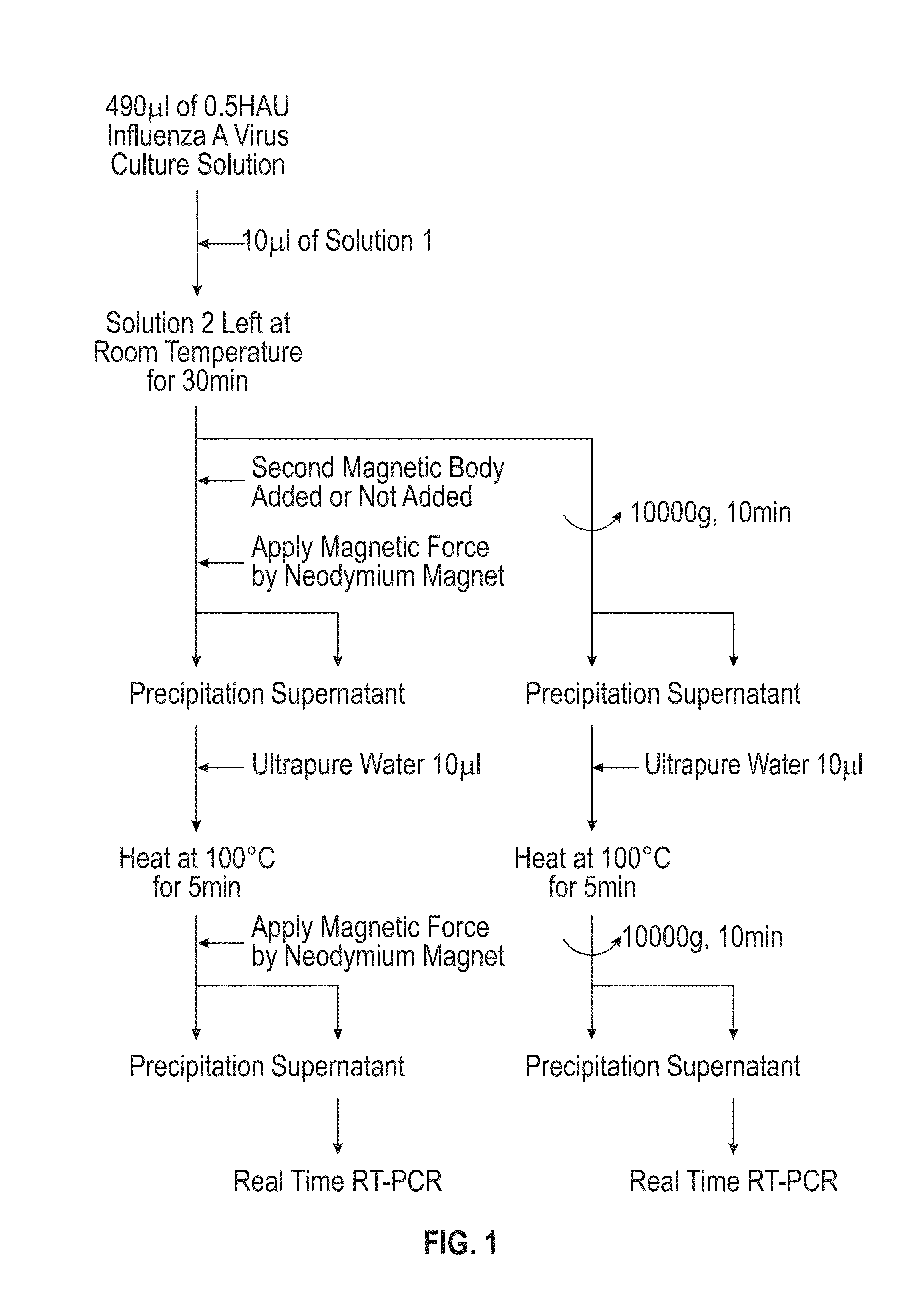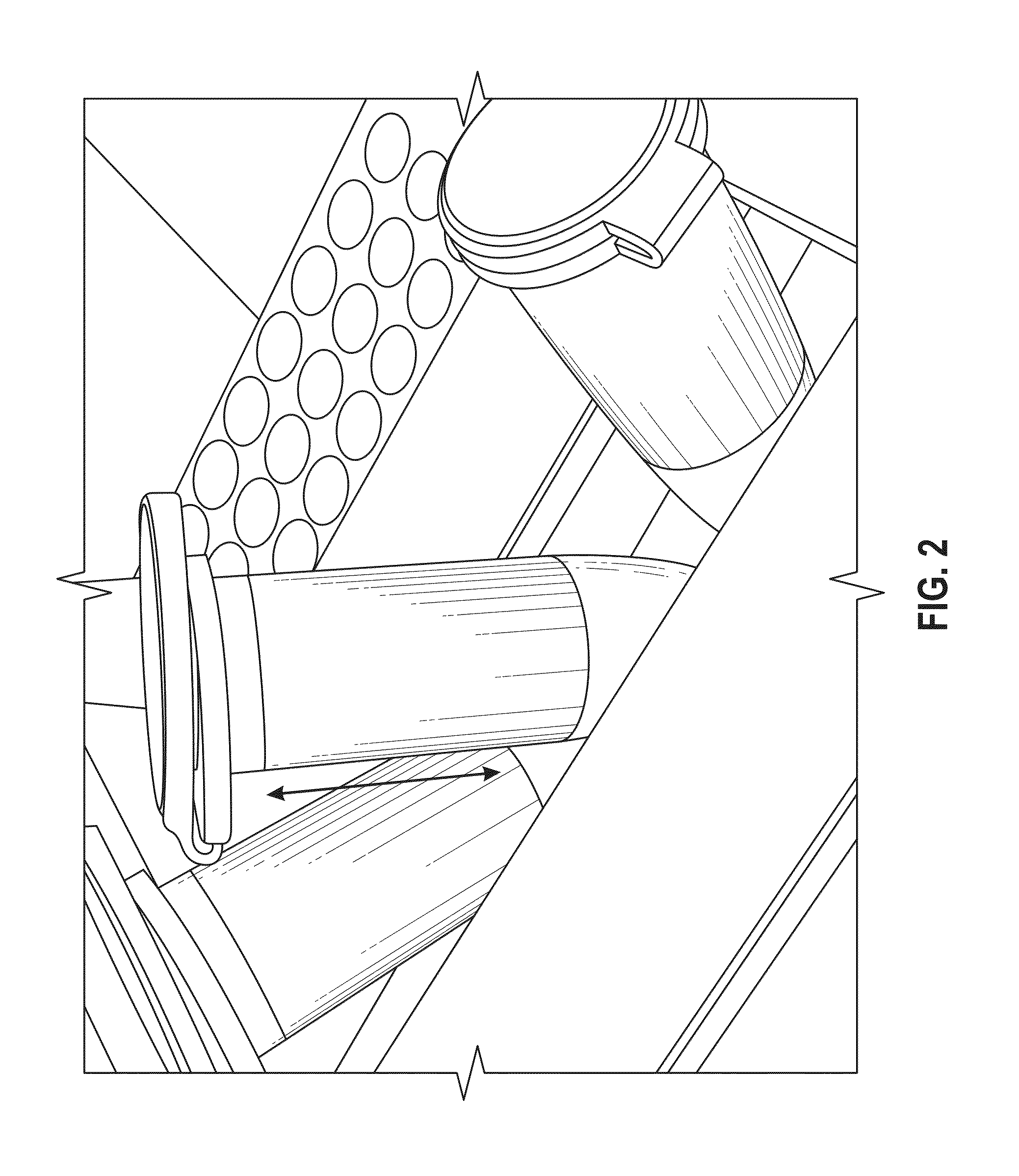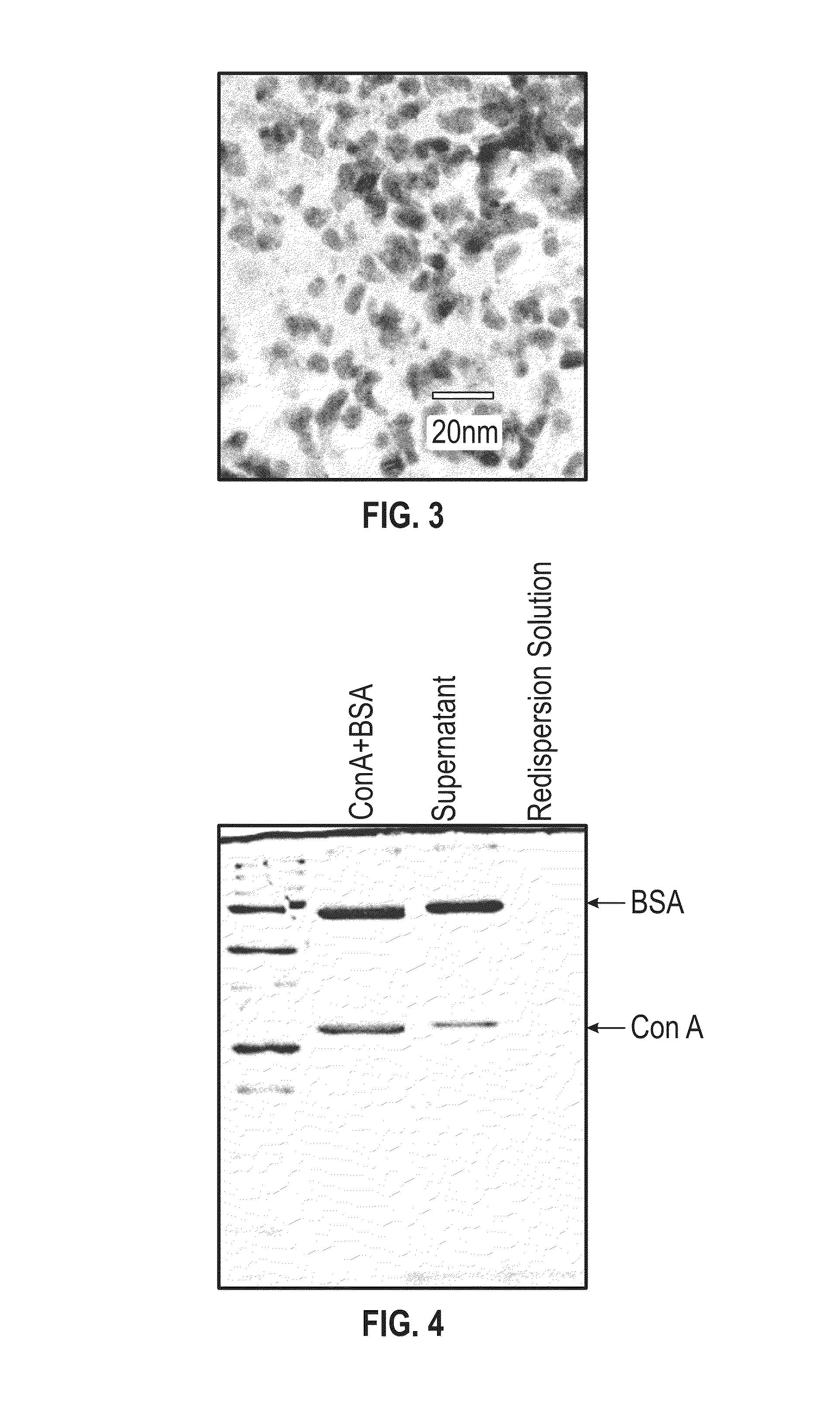Method for concentrating viruses, method for concentrating cells or bacteria, and magnetic composite
a technology viruses, applied in the field of new methods for concentrating viruses, a new method for concentrating cells or bacteria, and new magnetic composites, can solve the problems of dangerous scattering of samples, large gravity to be applied to samples, and damage in production, so as to achieve safe, efficient and selective concentrating of viruses, and safe, efficient and selective concentrating of cells or bacteria
- Summary
- Abstract
- Description
- Claims
- Application Information
AI Technical Summary
Benefits of technology
Problems solved by technology
Method used
Image
Examples
example 1
Concentration of Influenza Virus According to the Method of the Present Invention
[0160]50 μl of 50 mM iron (II) chloride aqueous solution and 25 μl of 50 mM iron (III) chloride aqueous solution were mixed with each other. 250 μl of 1 M ammonia water was added to the mixture while stirring the mixture. Thus, a solution containing iron oxide magnetic nano-particles serving as a first magnetic nano-particle were prepared.
[0161]Subsequently, 75 μl of 50 mM chloroauric acid (III) aqueous solution, 150 μl aqueous solution obtained by adding 5 mg of “ligand-conjugate containing heparin” to sterilized water, and 300 μl of 125 mM sodium borohydride aqueous solution were added to the solution containing iron oxide magnetic nano-particles and the resultant was stirred. Thus, a solution 1 of sugar chain-immobilized magnetic gold nano-particles in which heparin was immobilized (which may be referred to as “heparin-immobilized magnetic gold nano-particles. Mean particle size 33 nm) were prepared....
example 2
Analysis of Second Magnetic Particle
[0175]Subsequently, it was examined what magnetic particle could be used as the second magnetic particle. Table 3 shows examined magnetic particles.
[0176]0981S2453 TS-3 (produced by Powdertech Co., Ltd., referred to as “TS-3” in Table 3 and the following descriptions) is so-called Mn ferrite prepared by adding Mn to magnetite.
[0177]Dynabeads M-270 has been already explained in Example 1.
[0178]“Dynabeads MyOne 10 mg / ml (merely referred to as “Dynabeads MyOne” in Table 3 and the following descriptions, produced by Invitrogen Dynal, product number; DB65001) indicates that concentration of Dynabeads MyOne when Dynabeads MyOne is added to PBS (pH7.4) containing 0.01% Tween-20 and 0.09% NaN3 is 10 mg / ml. Dynabeads MyOne is a mixture of iron oxide and magnetite.
[0179]ProMag 3 series COOH Surfactant Free (PMC3N) (merely referred to as ProMag 3 series in Table 3 and the following descriptions, produced by Bangs Laboratories, Inc., product number; PMC3N) is...
example 3
Preparation of α-Glucose-Immobilized Magnetic Metal Nano-Particles
[0187]50 μl of 50 mM iron (II) chloride aqueous solution and 25 μl of 50 mM iron (III) chloride aqueous solution were mixed with each other. 250 μl of 1 M ammonia water was added to the mixture while stirring the mixture. Thus, a solution containing iron oxide magnetic nano-particles serving as a first magnetic particle were prepared. Subsequently, 75 μl of 50 mM chloroauric acid (III) aqueous solution, 150 μl of an ligand-conjugate aqueous solution (concentration 10 mM), and 300 μl of 125 mM sodium borohydride were added to the solution containing iron oxide magnetic nano-particles and the resultant was stirred. Thus, a colloid solution of crude α-glucose-immobilized magnetic gold nano-particles was prepared. The ligand-conjugate was prepared by dissolving 20 mg of maltose and 19 mg of the linker compound represented by the general formula (3) (n1=0, q=0) in 5.5 ml of a mixture in which water, N,N-dimethylacetamide, ...
PUM
| Property | Measurement | Unit |
|---|---|---|
| mean particle size | aaaaa | aaaaa |
| mean particle size | aaaaa | aaaaa |
| mean particle size | aaaaa | aaaaa |
Abstract
Description
Claims
Application Information
 Login to View More
Login to View More - R&D
- Intellectual Property
- Life Sciences
- Materials
- Tech Scout
- Unparalleled Data Quality
- Higher Quality Content
- 60% Fewer Hallucinations
Browse by: Latest US Patents, China's latest patents, Technical Efficacy Thesaurus, Application Domain, Technology Topic, Popular Technical Reports.
© 2025 PatSnap. All rights reserved.Legal|Privacy policy|Modern Slavery Act Transparency Statement|Sitemap|About US| Contact US: help@patsnap.com



